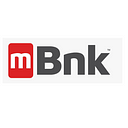According to CGAP, “Interoperability refers to the ability of different systems to work together. In the context of digital payments, interoperable services allow customers to transact beyond their own network.”
There are three ways interoperability in payments systems can be achieved:
(i) through simple scheme interoperability: Scheme interoperability is a feature of open-loop payments systems, or ‘schemes’, which consumers and businesses access through their relationships with their banks
(ii) by connecting networks through network interoperability: Network interoperability exists when one payment scheme negotiates an exchange agreement with another scheme.
(iii) by creating a business environment that enables parallel system interoperability to occur: Parallel system interoperability allows the merchant or agent accepting payment from a consumer to participate in multiple schemes
An interoperable global payment system for an e-commerce user means:
1) Accessibility: Fast, low-cost ways to obtain a payment method that, once obtained, can be used for multiple if not all purposes
2) Easy Operation: Using a payment method is intuitive and does not require a lot of training
3) Speed: Unlike existing traditional payments, which can take up to 2 to 5 business days to complete, an interoperable payment method should be able to be made quickly and potentially in real-time
4) Affordability: Cross-border payments can be expensive for small and medium-sized enterprises (SMEs); low-cost payments may be expected to be the norm in the digital economy
5) Seamless Transactions: It does not matter what kind of payment method a consumer chooses or what kind of payment method a merchant accepts; however, a transaction can be made without any technical or conventional interruption
6) Reliability: Once payment is made, the settlement between the sender and receiver will take place within a reasonable period of time, if not instantly
7) Security and Privacy: User data is protected against fraud and the use of data is done with user consent
Payment Interoperability in India
According to the RBI, interoperability is the technical compatibility that enables a payment system to be used in conjunction with other payment systems. Regardless of who issues the PPI card or the e-wallet, a user can use the card/e-wallet at any payment acceptance point.
“Sharing of infrastructure brings forth economies of scale in a tech-driven ecosystem. Achieving PPI interoperability through the cynosure of the payments world the UPI is a rhythm-changing initiative”, said RBI’s former executive director G Padmanabhan.
The Reserve Bank of India had set March 31, 2022, as the deadline for Prepaid Payment Instruments (PPI) interoperability.
India has developed a digital infrastructure of interconnected systems called India Stack, which simplifies complex processes such as identifying account owners and routing payments. India Stack aims to promote financial inclusion and increase competition within financial services. It provides a platform for operationalizing user-authorized data portability and interoperability across the economy. India Stack comprises four layers:
- Presence-less Layer: digital identity system (Aadhaar & eKYC)
- Cash-less Layer: an interoperable payment interface (UPI)
- Paperless Layer: digitalization of documentation and verification (e-Sign and DigiLocker)
- Consent Layer: a modern privacy sharing network
The main components of India Stack that ensure interoperability are a universal digital ID platform (Aadhaar), which includes biometric information, and an instant retail payment system based on open APIs (UPI), a common QR code, and unstructured supplementary service data (USSD) code. The Aadhaar platform allows its ID holders to authorize a bank to obtain an electronic verification of their identity, which provides an electronic substitute for the Know Your Customer (KYC) procedure required for any bank onboarding process. The UPI, a system developed by the National Payments Corporation of India (NPCI) through public and private sector collaboration, allows individuals to access their bank accounts from registered apps such as mobile wallets to transact with any other bank. At the same time, the Reserve Bank of India has recently issued a circular asking all licensed prepaid payment instruments (PPIs) or mobile wallets such as PhonePe, Paytm, and Amazon Pay to become fully interoperable via card network for card-based PPIs and through the UPI for e-wallets.
